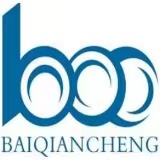
As I walked through the bustling aisles of an electronic manufacturing expo, I was struck by the sheer scale and innovation on display. Each booth showcased cutting-edge technology, from advanced robotics to intricate circuit designs. However, what often goes unnoticed amidst this technological marvel is the complex web of legal regulations that governs such events. This realization hit home when I overheard a discussion about compliance with international standards—an essential aspect for exhibitors aiming to succeed in a global market.
The Legal Landscape Surrounding Electronic Manufacturing Expo
The electronic manufacturing expo serves as a critical platform for industry stakeholders to showcase their innovations and establish connections. However, it operates within a stringent legal framework designed to ensure fair practices and consumer protection. One significant feature of this framework is its emphasis on Transparency and Disclosure Requirements. These requirements mandate that companies disclose relevant information regarding their products, ensuring that attendees can make informed decisions while fostering trust among participants.
China Machinery Expo: A Case Study in Transparency and Disclosure Requirements
Examining the china machinery expo provides valuable insights into how Transparency and Disclosure Requirements are implemented within similar contexts. At this event, exhibitors are required to provide comprehensive documentation related to product specifications, safety certifications, and environmental impact assessments. Such transparency not only enhances credibility but also aligns with global regulatory standards aimed at promoting sustainable practices in manufacturing.
Diving Deeper into ITES: Its Role in Transparency and Disclosure Requirements
The Information Technology Exhibition Services (ITES) plays a pivotal role in upholding Transparency and Disclosure Requirements during expos like these. ITES ensures that all participating entities adhere strictly to disclosure norms by conducting thorough audits before granting exhibition rights. This process includes verifying claims made by manufacturers regarding product performance or sustainability features—thereby safeguarding both consumers’ interests and maintaining industry integrity.
Conclusion

In summary, the electronic manufacturing expo exemplifies how adherence to legal frameworks—particularly concerning Transparency and Disclosure Requirements—is vital for fostering trust within the industry. By mandating clear communication between manufacturers and consumers, these regulations not only protect stakeholders but also enhance overall market efficiency as we navigate an increasingly interconnected world.
